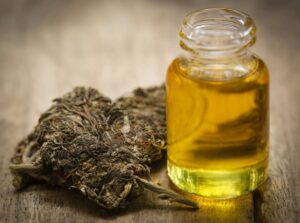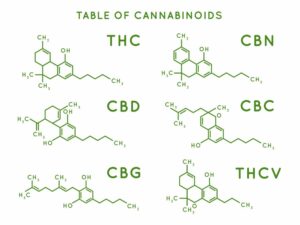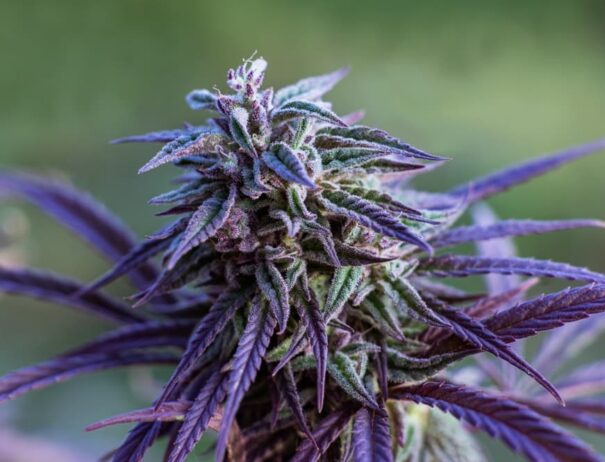Cannabinoids to Look Out For in 2023
As more jurisdictions across the country and around the world have made weed legal, cannabis research has increased exponentially in recent years. One result of these scientific investigations is that we know more today than ever before about how THC and CBD function. Yet, another benefit to cannabis research is the discovery of new cannabinoids. THCP and CBDP, for example, made waves a few years ago when a group of Italian scientists discovered these compounds.
What Is THCP?
THCP (tetrahydrocannabiphorol) is a naturally-occurring cannabinoid discovered in Italy in 2019. This compound is nearly identical to THC, except that the molecule has seven carbon atoms in its alkyl side chain rather than five. This difference makes THCP seven times more effective at binding to your cannabinoid receptor 1 (CB1), enhancing its ability to affect your mind and body. As such, many people assert that THCP is the most powerful cannabinoid on the market today.
What Is CBDP?

- Relaxation
- Calmness
- Mood-enhancement
- Stress relief
- Anxiety reduction
While we are still learning about the properties and effects of THCP and CBDP, the cannabinoid Age of Discovery is still going strong. Read on to learn more about the most exciting cannabinoids to look out for in 2023.
THCP-O (Tetrahydrocannabiphorol Acetate)
THCP-O is an acetated version of the powerful THCP. It is semi-synthetic and powerfully psychoactive. Users of THCP-O report experiencing euphoric highs that are both more potent and longer-lasting than delta-9-THC. Because of these characteristics, THCP-O is most appropriate for experienced cannabis users who need something more powerful for relief from pain or insomnia.
THCb (Tetrahydrocannabutol, Delta-9-Tetrahydrocannabutol, Tetrahydrocannabinol-C4)
This minor cannabinoid occurs naturally in the cannabis plant. It is similar to delta-9, but sources claim that THCb is 13 times more potent. THCb may be effective for those seeking relief from pain and inflammation.
THCjd (Tetrahydrocannabioctyl)
This rare THC isomer also occurs naturally in the cannabis plant. Due to its molecular structure and binding affinity, it may be approximately 19 times more potent than delta-9. The high from this cannabinoid is particularly intense and may lead to anxiety and paranoia in doses inappropriate for a given individual. However, careful THCjd doses may promote pain relief and relaxation.
THC-H (Tetrahydrocannabihexol, Delta-9-THCH)
This naturally-occurring cannabinoid is a hexyl homolog of delta-9. However, decades before its discovery in 2019, scientists synthesized a version of this compound, which doctors used to treat anxiety.
CBN-O (Cannabinol Acetate)
CBN-O is a minor cannabinoid related to CBN (cannabinol). It functions by interacting with the body’s endocannabinoid system. Anecdotal evidence suggests this compound’s effects include:
- Euphoria
- Sedation
- Stress and anxiety relief
- Nausea reduction
- Migraine relief
- Pain relief
HHC-A (Hexahydrocannabonolic Acid)
This semi-synthetic compound is formed by a complex process involving hydrogenating THCA (tetrahydrocannabinolic acid). HHC-A may be an effective way of treating some cancers.
HHC-O (Acetylated Hexahydrocannabonolic Acid)
As the O in the name indicates, this very new compound is HHC in acetate form, making it semi-synthetic. Some users believe it is up to three times stronger than HHC-A, causing a euphoric and relaxing high.
HHC-P (Hexahydrocannabiphorol)
Also a semi-synthetic cannabinoid, HHC-P is a hydrogenated derivative of THCP. Its stability and resistance to heat and ultraviolet light give it a longer shelf life than many other cannabinoids. Many people who have used HHCP argue that it is the most potent cannabinoid currently available, even outpacing THCP.
How Many Chemical Compounds Does Cannabis Contain?
The cannabis plant contains nearly 550 chemical compounds but not all of them are cannabinoids. These compounds fall into three different categories: cannabinoids, terpenes, and flavonoids.
Cannabinoids

Learn more about what CBG oil is and how to make it, in addition to the health benefits of CBG here.
Terpenes
Cannabis essential oils contain over 400 terpenes, which are volatile compounds responsible for a cannabis plant’s distinct qualities, taste, and smell. Some of the most common terpenes include:
- Myrcene – This compound may be effective for relaxing muscles.
- Pinene – Some users find pinene useful for inflammation.
- Limonene – Limonene may help reduce anxiety.
Flavonoids
Flavonoid compounds give cannabis its color. Marijuana and hemp plants contain more than 20 flavonoids. While science is still learning more about the properties of flavonoids, evidence suggests that some flavonoids found in cannabis plants may have powerful antioxidant and anti-inflammatory properties.
Are THC and CBD Still Useful?
With the explosion in the discovery of new and exciting varieties of cannabinoids, many people might wonder whether THC and CBD have much of a future. After all, if other cannabinoids are more powerful, will people still need to use the originals?

Fans of delta-9, delta-8, and CBD need not worry. These compounds have remained popular for decades because people know and love them. And while other cannabinoids may have a lot to offer, many of them are challenging and expensive to synthesize. Others exist in such small quantities within the cannabis plant that it will probably never be possible to produce them on the same scale as THC and CBD.
Even if producers find a way to streamline the process, scientific research into the short and long-term effects of these newly-discovered compounds may take several years to yield conclusive results. The major cannabinoids are certainly here to stay for the foreseeable future.
Nevertheless, 2023 is an exciting time for cannabis enthusiasts. We are fortunate to be alive at a time when the cannabinoid industry is the source of so much innovation and evolution. However, if you choose to purchase products containing these new compounds, be sure to get them from trusted and reputable sources that care about your safety.
No matter which cannabinoid you choose to use, incorporating it into your edibles is easy when you use the LĒVO II, LĒVO Lux, or LĒVO C infusion machines. These machines are “set it and forget it” devices. All parts are dishwasher safe, so clean-up is a snap. Once you figure out your preferred potency, you can set the machine to give you the consistent results you need every time.

Get Your Free eBook!
Download our FREE resource, The Ultimate Edibles Guidebook, full of recipes, infusion tips and everything you need to make your first batch of edibles today!



